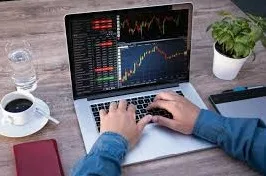Basic Terms in Forex that Traders Need to Know
 |
| Basic Terms in Forex that Traders Need to Know |
Basic Terms in Forex that Traders Need to Know
When we start to open a new order, you will find some very new words and terms. In this article, we will discuss some essential terms in Forex that novice traders need to know before starting trading.
We will use the most popular currency pair, namely EUR/USD in our trading experiment. For more details, you can read this article completely.
Currency Pairs
 |
| Image 1 – EUR/USD currency pair |
In currency pairs, the first currency is called the base currency, while the second is called the quote currency. For example EUR/USD, the base currency is Euro, and we are going to buy it in Dollars.
On the price chart, we can see a price change from the base currency to the quote currency. On the price chart the EUR/USD is moving down, that is, the EUR is getting weaker/the price is lower, while the USD is getting stronger and vice versa.
If the classification of currency pairs is categorized, then we can divide these currencies into groups:
- Major currency pairs;
- Minor currency pairs (cross pairs);
- exotic.
The major currency pairs are the US dollar and the most popular ones traded. For example EUR/USD, GBP/USD, USD/JPY, USD/CHF, AUD/USD, etc. In the world of trading, especially forex trading, 90% of traders transact using the EUR/USD currency pair.
How about minor currency pairs or often called cross pairs? Talking about Cross pairs, this currency pair consists of two popular currencies, but without involving the US dollar. The most common cross pairs are the euro, yen, and British pound. For example EUR/GBP, EUR/JPY, GBP/JPY, EUR/AUD, etc.
For exotic currency pairs, a pair consists of one major currency and one currency that represents developing country economies (Brazil, Mexico, India, etc.) or small economies (Sweden, Norway, etc.). These pairs are known to have very high volatility values. For example USD/NOK, USD/HKD, USD/ZAR, USD/MXN, USD/RUB, EUR/TRY, USD/BRL, USD/TRY, etc.
Pip and Big Figures
 |
| Image 2 – Pip and Big Figure |
In the forex market, currency values are expressed in pips. If we look at the EUR/USD price quote of 1.1322, this means that we can buy 1 euro for 1.1322 US dollars. If the rate changes and becomes 1.1328, it means the euro has just gotten 6 pips higher.
Exchange rates are usually quoted up to 5 digits. The first three digits are called the Big Figure. Big Figure labeling also applies to changes in the quoted price above 100 pips (eg, from 1.1279 to 1.1179).
Spread
 |
| Image 3 – Spreads |
The spread is the difference between the best ask and bid prices at the same time. This difference can be regarded as a broker's commission which is a service for providing services. Therefore when a trader opens a new order, they will initially lose the amount of the spread. So, the smaller the spread of a broker, the better it is for traders.
Stop Loss and Take Profit
 |
| Image 4 – Stop Loss and Take Profit |
Take Profit (TP) and Stop Loss (SL) are limit orders that we place to close a transaction under certain conditions. TP will close the order we made when the order reaches a certain profit. Meanwhile, SL is needed to minimize risk and prevent large capital losses. The logic that must be understood in determining Take Profit (TP) and Stop Loss (SL) is as follows:
- If we buy Euros, the TP must be greater than our order price, while the SL is smaller;
- If we sell Euros, the TP must be less than our order price, while the SL is bigger.
The process of setting TP and SL can be determined directly when the order is opened, or adjusted after the position has been opened. Each trader sets TP and SL manually and generally uses SL 3 to 5 times smaller than the recommended TP.
Volume
 |
| Image 5 – Volumes |
Volume in forex shows the amount of currency we want to buy or sell in one order. Volume is measured in lots. 1 lot on MetaTrader is equal to 100,000 units of base currency. The largest value of the volume of orders that we place depends on the amount of deposit in our account.
Not all traders have the opportunity to buy or sell 1 lot, therefore the broker provides clients with leverage. The broker offers a leverage of 1:1000, which means you can place orders 1000 times your capital. The smallest order volume starts from 0.01 lots.
Closing
Thus a short article for you, especially for novice traders. In this article, we deliberately summarize some of the basic terms that you are very likely to encounter when trading forex. Hopefully, this article is useful for all of you.
Sumber: AMarkets.
Written by:
Author profile
Maurits Wattimena
AMarkets Trading Broker Analyst
Published by: DFX.






.png)
